Scottish election 2021: Five ways to win a digital election campaign
- Published
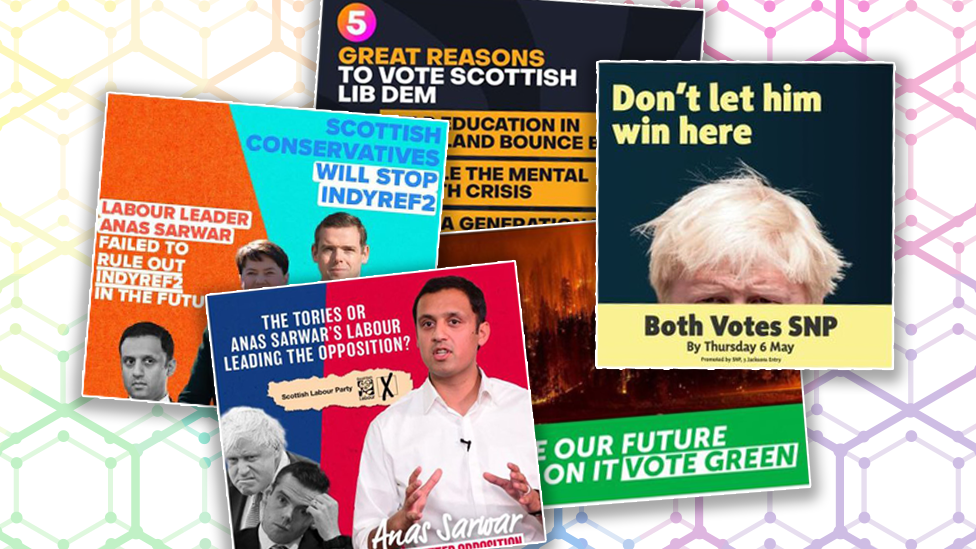
The Covid-19 pandemic means campaigning in this Scottish election looks very different to normal.
Parties were only allowed to begin doorstep campaigning on 12 April, less than a month before polling day, and candidates remain under tight restrictions. There are no street stalls or big rallies, selfies have to be socially-distant and shaking hands and kissing babies is strictly off the table.
With what is known as the "ground war" of canvassing and direct interaction with voters largely on hold, more focus than ever has been turned to the "air war", where parties push out their messages on TV and the radio - and, increasingly, online.
The biggest of these social networks - Facebook - now publishes details of what political parties are spending and the ads they place. Taking a look at the details, the parties have not been spending vast sums on digital adverts - most are in the five-figure range for the campaign overall. But they have been pumping out a huge range of material in a bid to win over voters remotely, using a series of techniques.
1. Keep it local
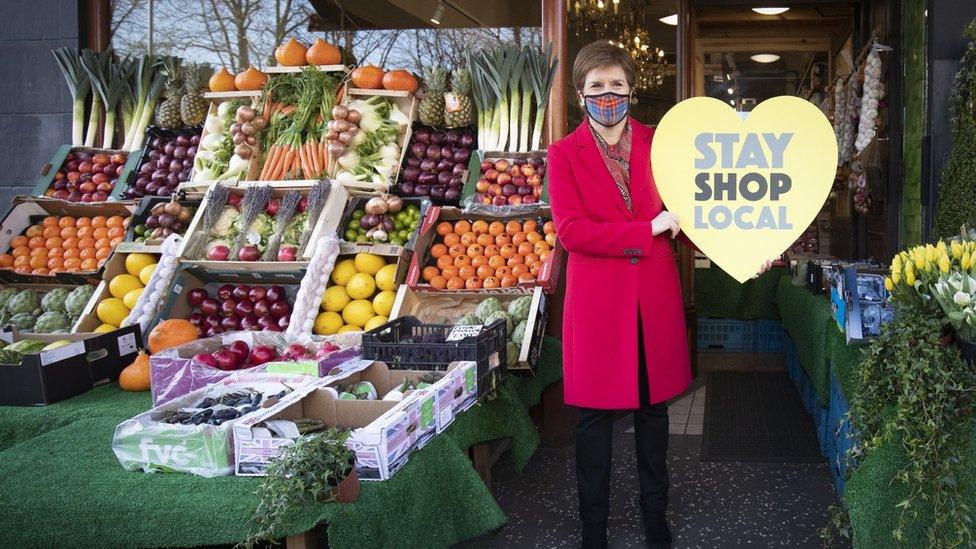
First Minister Nicola Sturgeon campaigns on shopping locally
In line with a growing trend from other recent elections, parties are doing a lot of their local messaging via local pages, rather than top-down from party HQ.
So instead of using the main SNP account to try and target messages at, say, Dundee, the party will use the Dundee SNP page to more effectively target voters on Tayside.
This goes right down to individual candidate level - there are a slew of "Joe Bloggs for Hometown North" style campaigns tailored to different parts of the country.
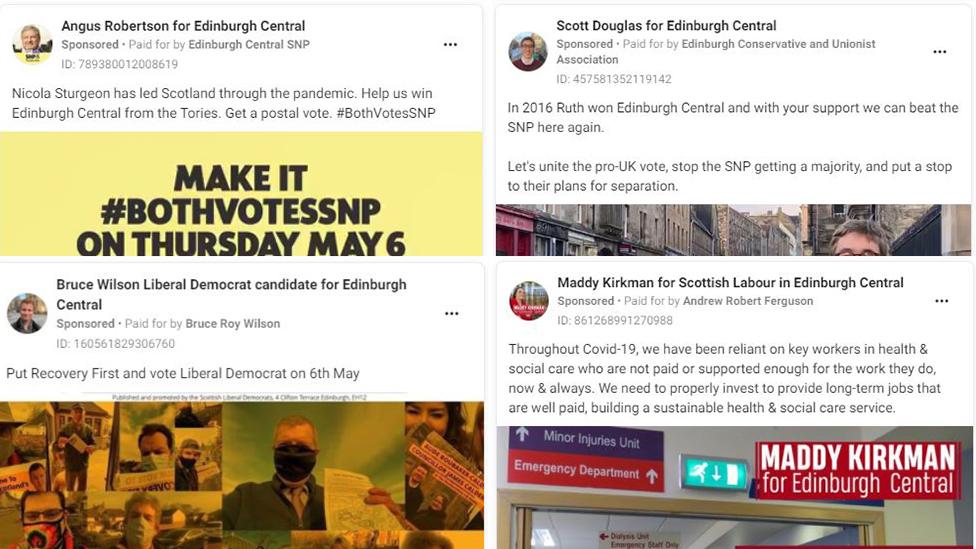
In some constituencies many candidates are all running personal ad campaigns - a full list of candidates is available on the BBC website
These allow the candidate to present their policies in person - and promote causes close to the hearts of local voters, like the closure of a local library or sports facility.
They also go right across the political spectrum - even Communist Party candidates have embraced the corporate approach and bought Facebook ads.
2. Follow the leader
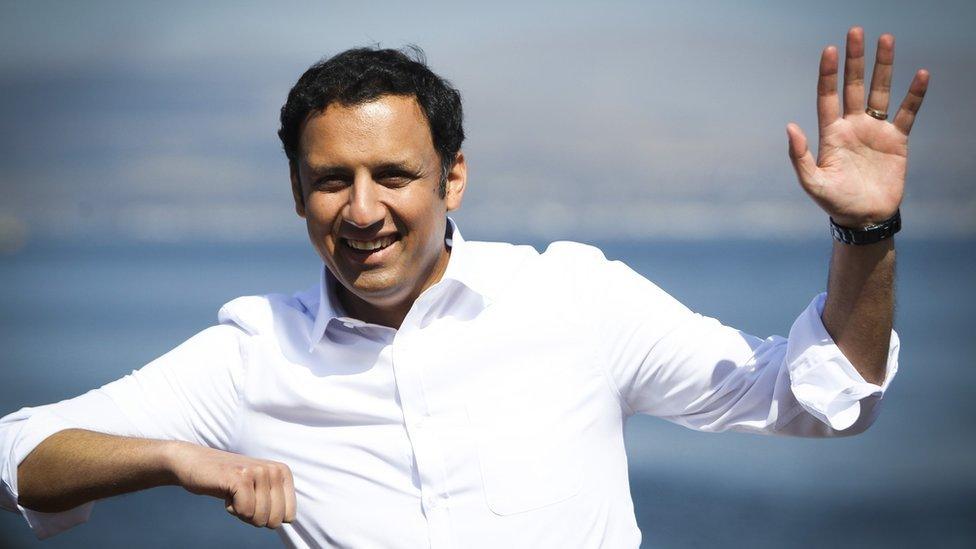
Anas Sarwar launches Scottish Labour's election manifesto
Party leaders can still be key players even in localised campaigns, however.
In the first part of the campaign, Labour actually spent more money on ads for the Anas Sarwar page than they did on the national one, which basically just pushed messaging encouraging people to sign up for a postal vote.
This was in part because Mr Sarwar is very new to the job and needs to establish a profile quickly - but also perhaps because the party thinks he might have greater appeal as a "new broom" candidate for change than their existing brand.

Meanwhile, even SNP ads in the name of other candidates often mention Nicola Sturgeon, stressing her leadership .
This matches the party's wider strategy of branding itself as "Nicola Sturgeon for SNP first minister" on every ballot paper.
3. Focus on the 'party vote'
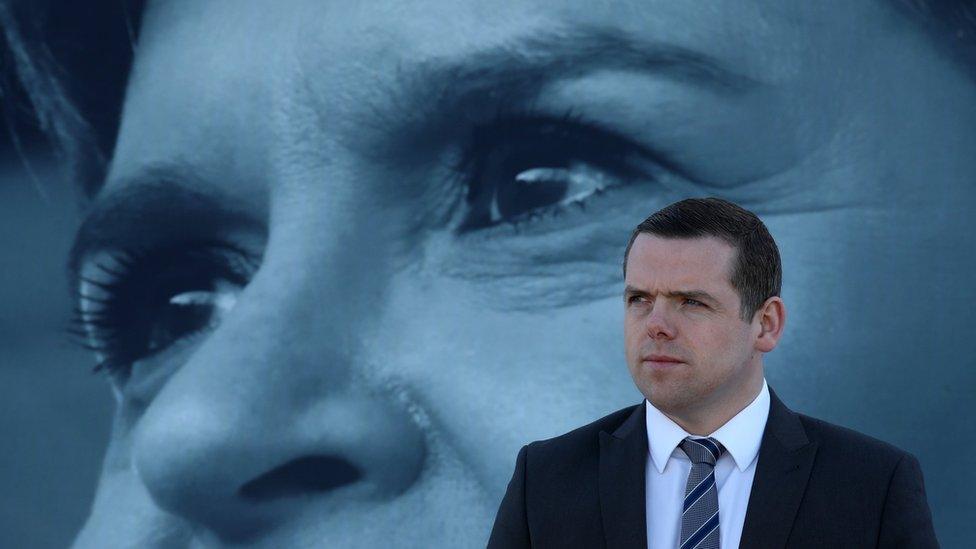
Scottish Conservative party leader Douglas Ross stands in front of a picture of First Minister Nicola Sturgeon as he launches an ad van campaign in Glasgow
With the constituency races covered by more local ads, the main social accounts of the main parties have been focused chiefly on the other ballot paper - the race for the regional lists.
Perhaps prompted by the emergence of the Alba Party, the SNP has run a number of ads - mostly aimed at older voters, perhaps those more rooted in the Alex Salmond era - stressing the importance of "both votes SNP" to their strategy for winning an outright majority.
Meanwhile the Alba Party itself has been taking out high-value ads attacking this approach, saying pro-independence votes are being "wasted".
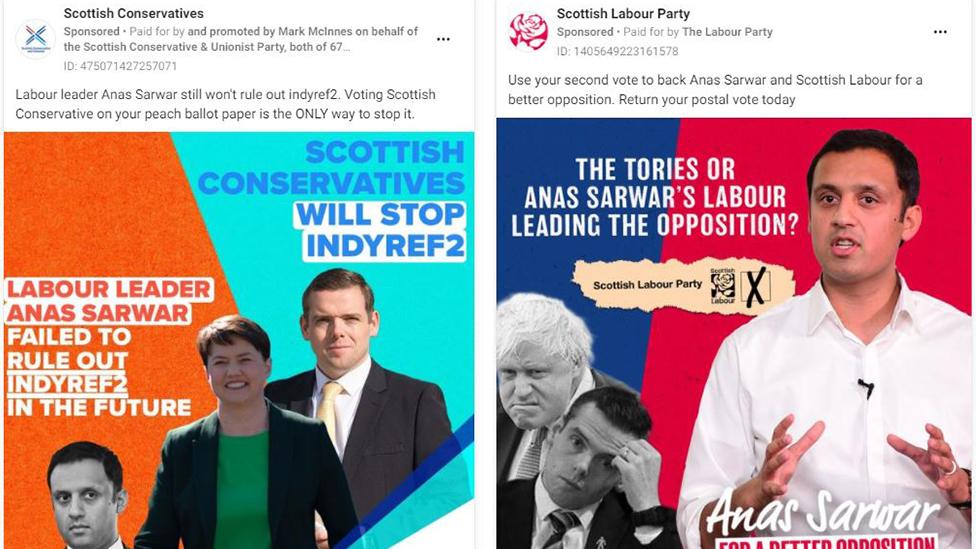
The Conservatives and Labour have also spent relatively large sums on ads targeting the "party vote" or "second vote". These often include jibes at each other, underlining that these two parties are vying with each other for list votes in the battle for second place at Holyrood.
These ads almost boil down to an instruction manual: they often stress that they are looking for support on the "peach ballot paper" and include diagrams of precisely where to draw a cross.
4. Design a winning ad

Scottish Liberal Democrat leader Willie Rennie handles a six-week-old badger during a visit to the SSPCA National Wildlife Rescue Centre at Fishcross near Alloa
Strong imagery and design is crucial to a successful campaign - particularly given that many ads run on Instagram as well as Facebook.
For example, the SNP appears to be extremely fond of a particular picture of Boris Johnson - the prime minister may be absent from the Conservative campaign, but he is front and centre in the SNP one.
The party has run 23 ads so far in 2021 all using the same image of the top half of Mr Johnson's distinctive mop, many reading "don't let him win here".
The picture is actually recycled from the party's 2019 general election campaign, which was about trying to "lock him out of Downing Street" - the SNP gained seats in that election, so presumably want to continue a winning strategy.
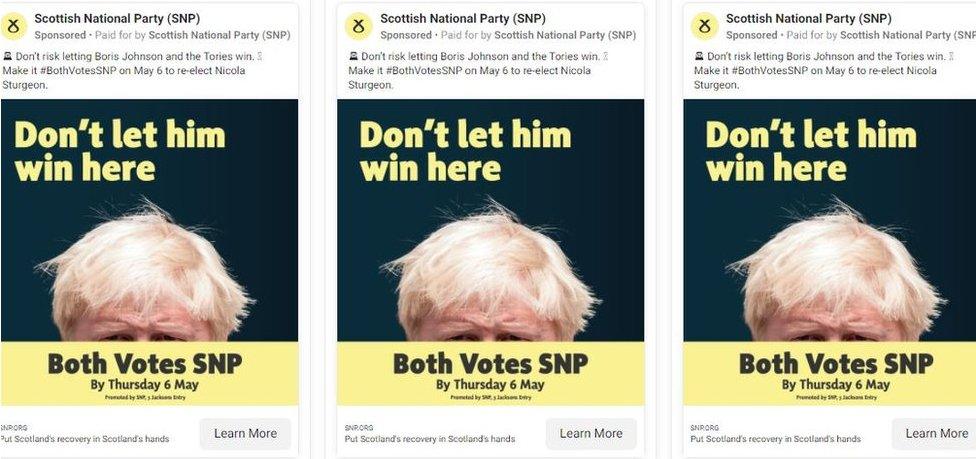
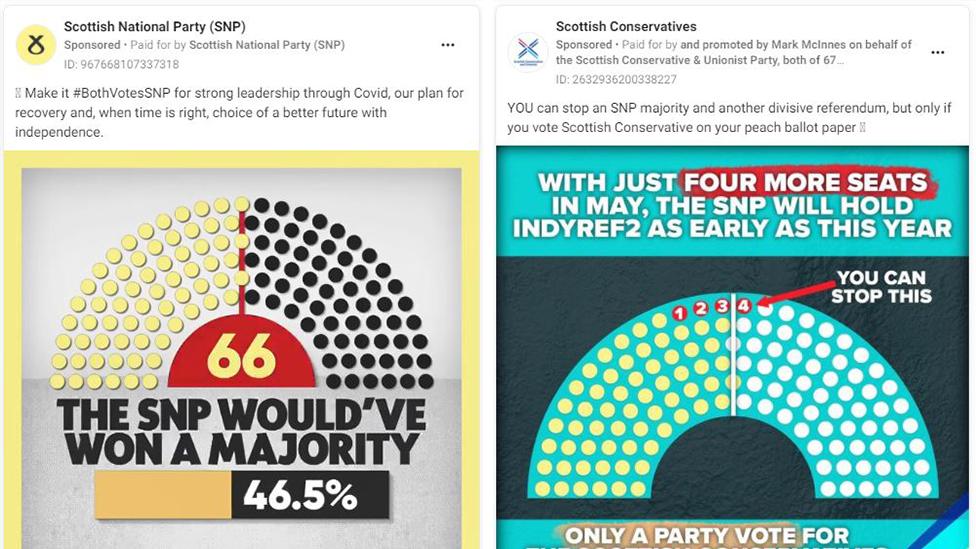
Visual representations of the parliament are also popular; the SNP and the Conservatives both use the same fan-shaped graphic to show what it might take to achieve an overall majority.
There are broadly two approaches to drawing up these ads, which as the images above underline means they can sometimes end up looking quite similar.
One is to use a striking image, like the Scottish Green ads which use pictures of a raging forest fire to urge people to "vote for climate action"
The other is to mock up graphics using moving text and images - like the Lib Dem ads illustrating "five great reasons" to vote for them.
5. Target your advertising

Greens co-leader Lorna Slater launches their manifesto
Online advertising platforms allow parties to tailor their messages not just to local areas, but also to different demographics of the population.
So adverts about tuition fees are generally shown mostly to younger people - and those about prescription charges and pensions to older voters.
SNP ads which reference Brexit are mostly pushed at younger voters, while those touting Nicola Sturgeon's pandemic leadership are generally more likely to be shown to those of middle age and up - who may have been more likely to have followed her regular televised briefings.

SIGN UP FOR SCOTLAND ALERTS: Get extra updates on BBC election coverage

There is also a gender divide, with SNP ads about period poverty and free childcare being shown exclusively to women.
And while the Conservatives and Labour are both touting for the "party vote", they are actually often targeting different voters - the Labour ads are mostly pitched at younger demographics, while the Conservatives often don't even show their ads to those under 35.
Meanwhile the Scottish Greens pitch many of theirs exclusively at younger voters - the party spent more than £3,000 pushing the forest fire ads mentioned above, and 94% of the people who saw them were under 35.
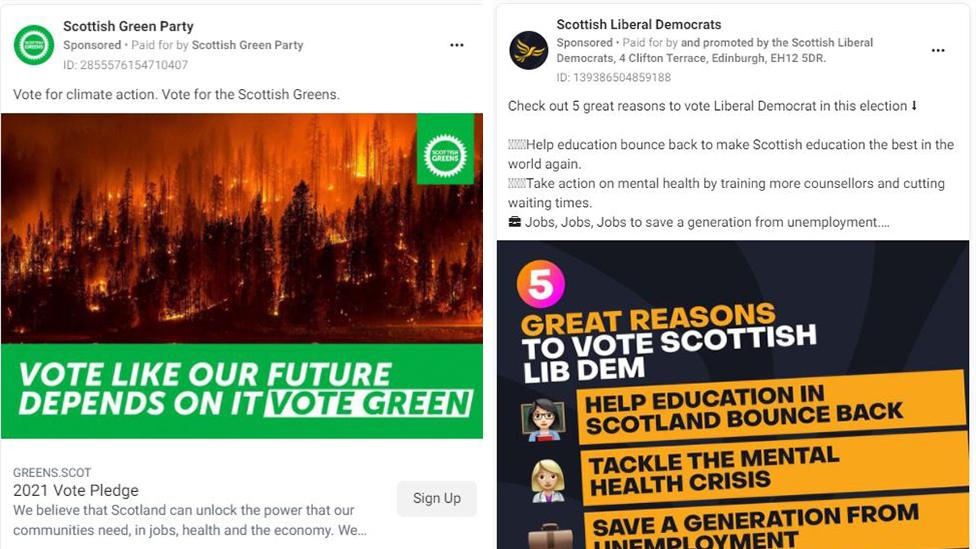

POLICIES: Who should I vote for?
CANDIDATES: Who can I vote for in my area?
PODLITICAL: Updates from the campaign
